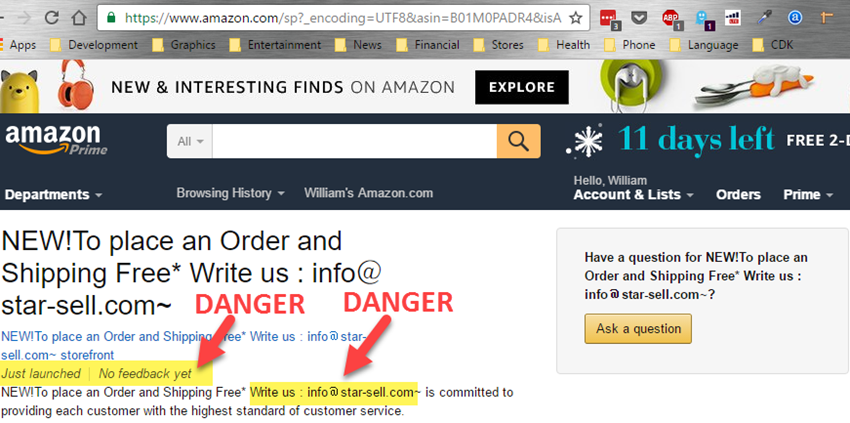Landscape Pro doesn't compete with Adobe Lightroom or Photoshop. It doesn't compete with any of the Alien Skin products. In fact, there's no existing product I can think of that Landscape Pro competes with. The new application from Anthropics Technology Ltd, a British company, has no competition. Because that's the case, explaining what the application does and why you would want it is somewhat challenging.
But I like challenges, so here we go ...
Anthropics seems to be a well established company with various applications for portrait photographers. Some of these would compete with Adobe or Alien Skin products. CREATEC was launched by the National Film and Television School in 1997 to "invent the future of digital media" and the CREATEC developers moved to Antrhopics in 2000.
Landscape Pro was released this year and the company has a roadmap that suggests several intersting, unusual, and usable applications are in the pipeline. Although the application can be used to modify images that contain people, its primary purpose seems to be making adjustments to landscape images.
I started with an image from outside our yurt at The Wilds. It was an image that I took in the morning. The Studio version of Landscape Pro ($60) can read many raw file formats as well as JPG and DNG (digital negative). The Standard version ($40) omits the ability to read raw and DNG files. Additionally, the Studio version reads and writes TIFFs with 16 bits per color sample; supports conversion between different color spaces; supports setting monitor and working color spaces; has embedded color profile support for JPEG and TIFF files; and -- besides working as a standalone application -- can be a Photoshop, Photoshop Elements, or Lightroom plug-in.
You'll start by placing tags on various parts of the image. Here I've tagged the sky, trees, grass, and rock. You'll notice that the application hasn't expanded the selection accurately in all cases.
The next step involved expanding the selection areas and setting the horizon line.
It's possible to replace the sky or to modify the lighting with the existing sky.
Here, I've chosed to replace the sky. After looking at this for a while, I decided that I didn't like it.
Changes start with the Presets and, once you've chosen one of those, you'll find sliders that control various aspects of each tagged area of the image.
I selected a diffrent sky and then moved on to modifying the grass.
The resulting image is not accurate in terms of what I saw on the day I was there in late summer of 2016, but it does represent an acceptable interpretation of the scene.
It's also possible to specify the angle and intensity of sunlight in the image.
 Landscape Pro offers a new way to modify images.
Landscape Pro offers a new way to modify images.The unusual approach taken by Anthropics makes it possible to modify specific sections of an image based on the type of object you want to change. The automatic selection process does a good job of guessing which areas of the image belong together and fine-tuning the selected areas is quick and easy. Controls are clearly marked so that specifying how you want to apply changes is straighforward. This version 1 release has a lot of promise
Additional details are available on the Landscape Pro website.
I could start by saying that Adobe's free web-based Spark application will make you look like an HTML5 genius, and it will. But there's more if you want to go beyond HTML and create a small video, Spark helps there, too.
The Department of Natural Resources area of the Ohio Exposition Center is the location for a Chinese Lantern Festival. My wife and I stopped by last week and I took some pictures. Then I used Adobe Spark to create this page. Take a look at it and, if you know how to view the page source, take a look at that, too. No Flash is involved. It's all HTML5 with a bit of Javascript thrown in.
As impressive as that is, the creation process is even more impressive. Visit the Adobe Spark Website (spark.adobe.com) and create a free account. If you're a Creative Cloud member, just use your normal credentials to log in. You'll find options to create a post (memes, invitations, quotations, and such), a page (that's what the Chinese Lantern Festival link shows), or a video (more about that in a moment.)
The interface is extremely easy to use. Upload pictures, type words, specify a style or layout, preview, and then share. That's all there is to it. If you're creating a video, you'll be able to add narration and music if you wish in addition to setting the overall style and selecting different kinds of scenes -- with or without words, one image or two, side-by-side images, or one image overlaying another.
Using some of the pictures from the Chinese Lantern Festival, I put this one-minute video together in less than half an hour.
It's not Adobe's fault or Adobe's problem, but the browser I was using (Chrome) kept crashing. The error message suggested that I needed to activate WebGL in Chrome. I did that, but it still crashed every time I tried to preview the presentation. You might think that this caused a lot of lost work, perhaps some stomping (or even swearing), and that the result was frightened cats. Nothing of the sort! Adobe Spark has no save button. The instant you do something, it's saved, so all I had to do was relaunch the page and continue.
Eventually I gave up on previewing in Chrome. All of the other browsers I tried rendered the previews properly and the finished video plays properly in all browsers that I tested.
Late in the week, just past the TechByter weekly deadline, Adobe released new versions of the web-based version and the IOS version of Spark so you may find some spiffy new features that I didn't mention.
While looking for something else on Amazon.com, I noticed a price of $500 (including shipping and taxes) for an item that should cost nearly $800. The merchant noted that it was essential to contact them by email before buying.
That's the second warning sign (the first is the price) because Amazon doesn't work that way. How this "business" managed to list several hundred items on Amazon is a mystery. Everything listed was a high-ticket item being sold for roughly 40% to 50% off the expected best price.

Just to see what would happen, I sent an email to the "merchant" and quickly received a reply:
"We will do this transaction through Amazon protection program, in this way we are both sure that we get what we want. We will register on Amazon as a purchaser of the product and Amazon will give you a payment invoice. You will pay the money on Amazon account, and they will keep the money until you receive the product and test it. Then, only with your knowledge, Amazon will release-payment to us if the item is as you expected and you decide to keep it."
The message requested that I reply with my name, delivery address, and phone number. Then "[w]e will reserve this item and you will receive shortly the order confirmation from Amazon. We wait your prompt reply."
I tried looking at the seller profile. Danger signs all over the place. Amazon goes to great lengths to keep sellers from obtaining buyers' email addresses and to keep buyers from directly contacting sellers. What's surprising is that Amazon doesn't have some automated procedure that looks for email addresses when someone tries to include one on a merchant page and either rejects them outright or flags them for review. Writing a regular expression to perform that task wouldn't be hard. After all, the e-mail address is on this page 3 times.

Although Amazon doesn't allow merchants to sell off-site, not everybody knows that and I'm sure that the response from this "merchant" would claim to be from Amazon and display Amazon graphics.
How many people fell for this before Amazon shut it down. It was gone less than 12 hours after I reported it.
For many years Malwarebytes Anti-Malware and, more recently, Anti-Exploit and Anti-Ransomware have been used side-by-side with anti-virus applications from other companies. Now Malwarebytes has rolled all of its applications into a single product that threatens to displace standard anti-virus applications.
Although the Malwarebytes program continues to play well with standard anti-virus applications, Marcin Kleczynski, writing on the company's blog, said the layered defense provided by Malwarebytes 3.0 provides technologies that combat modern threats and zero-day malware. "The combination of our Anti-Malware, Anti-Exploit, Anti-Ransomware, Website Protection, and Remediation technologies has you better covered against modern threats than the traditional anti-virus companies that charge more for less effective protection."
I've been running Malwarebytes 3.0 for a while and like the updated interface and the faster operation that's evident in this new version. Kleczynski says developers have spent a year building the new version. Calling it "Malwarebytes Anti-Malware, Anti-Exploit, Anti-Ransomware, Website Protection, and Remediation Technologies" would be a bit much, so the new product is just called Malwarebytes.
Installation is surprisingly easy. I had both the Anti-Malware and Anti-Exploit installed. The installer recognized this and automatically removed the no-longer-needed Anti-Exploit in addition to the older version of Anti-Malware. I didn't even have to reboot the computer, but I did. It's a good idea to do this after any significant update has been installed.
Malwarebytes 3.0 sells for $40, but the company says existing customers will continue to pay the price they signed up for. If you have a $25 subscription for Anti-Malware, you'll continue to pay $25 per year for the new version.
The new version runs on all versions of Windows starting with XP, but the Anti-Ransomware technology is enabled only on Windows 7 and higher.
Liabilities keep piling up at Yahoo, which this week announced that it lost control of one billion (1,000,000,000) user names, phone numbers, birth dates, and other information that's useful to criminals. And when did this happen, you may wonder? Three years ago in 2013.
That's in addition to the half-billion (500,000,000) sets of credentials that were stolen in another attack. Within a single year, Yahoo has set two records that nobody ever wants to set. Yahoo says that credit card and bank account information are not stored with other user data, but thieves did make off with unencrypted security questions that Yahoo uses to authenticate users.
If you changed your Yahoo password earlier this year following the first announcement, you're OK because the breach announced this week is 3 years old. On the other hand, if you have a Yahoo account and you haven't changed the password since 2013, now would be a really good time to do that.
In July Yahoo and Verizon announced that Yahoo would sell its core business units to Verizon. That would include Yahoo Mail, but litigation is likely and Verizon's lawyers and accountants are probably taking another look at the deal.
Yahoo issued a statement that said "We are confident in Yahoo's value and we continue to work towards integration with Verizon." The company also said that it is notifying subscribers and that all users should review their on-line accounts for suspicious activity and change both their passwords and their security questions for any accounts that use "the same or similar information used for their Yahoo account."